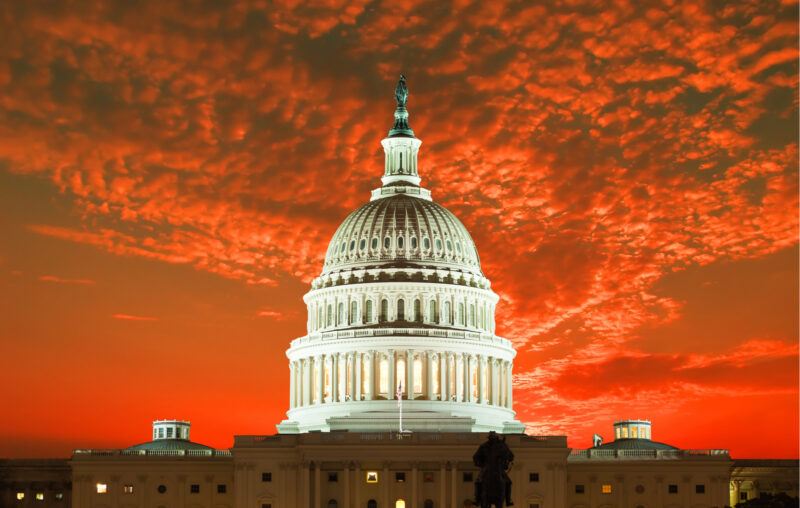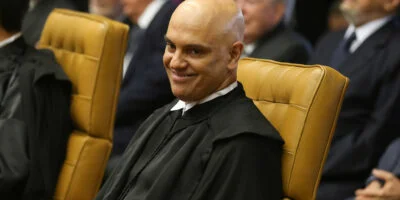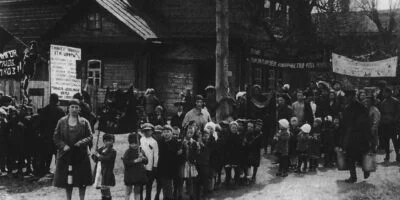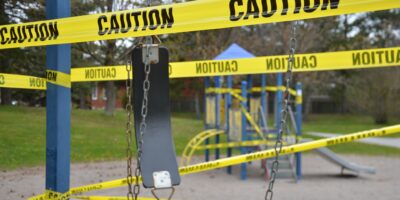Elites Gone Wild

Just about every US history textbook devotes a paragraph or two to “Coxey’s Army,” a group of unemployed men who descended upon Washington, DC in 1894 seeking to influence national economic policy. That a movement that called itself “The Commonwealth of Christ” ended up in the history books with such a militant label is an object lesson in elite political self-preservation. The government’s reaction to protest at the Capitol then bears some instructive similarities and differences to its reaction in 2021.
For only the third time in the country’s history, the government in 1894 militarized the nation’s capital, not to fend off Redcoats as during the War of 1812 or the Army of Virginia as during the Civil War, but to protect the federal government from a modern day Robin Hood named Jacob Coxey. A successful businessman who led a band of about six score men from Massillon, Ohio to the nation’s capital, Coxey sought not to reverse the American Revolution or make the world safe for slaveholders. He alienated himself from friends and family to urge enactment of a half billion dollar stimulus bill to fund a national road network that he hoped would jumpstart an economy still reeling from the depression brought on by the Panic of 1893.
Aided by the one-man publicity machine that was actor-painter-agitator Carl Browne, the “march” of Coxey’s “Army of Peace” garnered daily publicity from newspapers anxious to expand sales. Tensions mounted, though, when “armies” in the Pacific Northwest also began heading to the nation’s capital to seek reform or relief, and commandeering trains to do so (For details, see Jerry Prout, “Populism and Populists: The Incoherent Coherence of Coxey’s March,” American Journal of Economics and Sociology 78 (May 2019): 593-619; Wesley Bishop, “Creating the Commonweal: Coxey’s Army of 1894, and the Path of Protest from Populism to the New Deal, 1892-1936,” [Ph.D. Diss., Purdue 2018]).
Browne also generated considerable controversy when he portrayed himself as the second coming of Jesus Christ on a banner that proclaimed “Death to interest on bonds!” Followers of the Commonweal of Christ also threw around phrases and images from Looking Backward, the 1888 socialist utopian novel by Edward Bellamy. The presence of Hugh O’Donnell, a union leader during the 1892 Homestead strike, added yet more tension, as did Coxey’s embrace of all marchers regardless of their race or national origin. Leaders feared that the working men of the world might finally be following Karl Marx’s call to unite.
Meanwhile, in Washington, the 13 Populist party members of Congress distanced themselves from the marchers. Senator William Stewart (R-Nevada) warned Coxey that his march of “folly” was an ill-advised stunt that would fail to achieve Coxey’s policy goal while strengthening “the money power.” Stewart proved more prescient than Browne.
On May 1, International Labor Day, Coxey and his ragtag band of followers, which had swelled to about 500, processed from a suburb of Washington towards the steps of the Capitol, where Coxey planned on saying: “We stand here today on behalf of millions of toilers whose petitions have been unresponded to, and whose opportunities for honest, remunerative, productive labor have been taken from them by unjust legislation protecting idleness, speculators, and gamblers.”
He never made it, though, as both the DC police and federal government sprang into action, stopping Coxey’s “reinforcements” from commandeering more Washington-bound trains, setting up armed guard houses around the White House, and infiltrating the procession with Secret Service agents. Police arrested Coxey for trespass as soon as he entered the grounds of the Capitol because he had failed to secure the proper permit and stepped on the grass. In the process, the police bashed a few skulls, including that of Browne, who purportedly tried to outflank the police on his steed, and soon routed the rest of the marchers.
Remnants of Coxey’s followers subsisted for a time at the local municipal dump. A few stragglers from the West joined them but most were disheartened by the easy breakup of the march and gave up well before reaching DC. Once media attention shifted to the Pullman Strike, which began on 11 May, authorities quietly mopped up the remnants of the movement and DC returned to normal.
Unwilling to use force for fear of spurring a backlash, the marchers allowed the government to break up their peaceful protest and the winners, their critics, to label them for all time: “Coxey’s Army” soon became slang for any unorganized gang. Although many Americans sympathized with the marchers, many also feared the chaos a mob of men desperate for money and provisions might cause. Rumors swirled that their real object was to seize the U.S. Treasury, which then contained millions of taxpayer dollars. That would require violence, and violence is bad, so violent suppression of the marchers was, by this “logic,” justified in the public mind.
At the same time, though, government officials were careful not to overreact to the marchers, physically preventing protestors from taking over the Capitol but not being unduly harsh on them lest they make a mountain out of a molehill. Coxey’s brief brush with the law, a single night in the DC clink, did not seriously negatively affect his life or career. During the course of his long political career, Coxey, who no joke named his son Legal Tender, counted himself a member of six different political parties, including the Greenback, People’s, Socialist, Republican, Farmer-Labor, and Democratic parties. In 1914, Coxey led a second march on Washington and that time was allowed to speak from the steps of the Capitol. Exactly thirty years after that, a half century after the original march, he was invited to DC to read his 1894 speech again. Coxey died in 1951 at age 97, his policy views partially implemented by federal aid highway legislation and some New Deal works programs.
Today, of course, government ownership of the interstate highway system and massive stimulus bills are assumed rather than reasons to stage protests. Marches on Washington have become common, almost cliched, and much larger than Coxey’s tiny brigade. Typically, security precautions are taken, speeches given, and the status quo maintained or even strengthened as Americans take pride in a government that encourages vigorous political speech.
The effect on public perceptions of fortifying and garrisoning the Capitol for unclear reasons for an unknown period in response to a riot that looked insurrectionary only because it mysteriously succeeded for a short time must, of course, remain unknown. But with an approval rating that is already abysmally low, Congress may have calculated that keeping its members alive is more important than keeping America’s democratic traditions alive. This is, after all, an age where no death can be tolerated, even if saving one person from something salient, like Covid-19, means another must die from a different, less important cause, like freezing to death.










